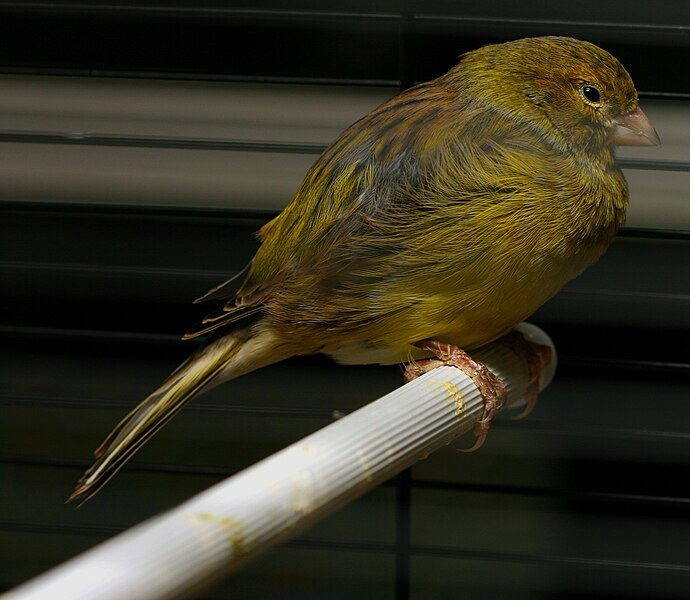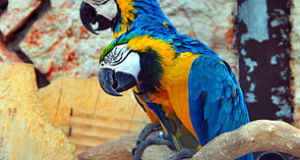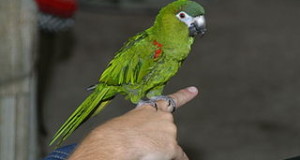 Molting season is a trying time for Canaries – after all, they are shedding and replacing over 2,000 feathers! Following are some steps you can take to lessen the stress of your pet’s annual molt.
Molting season is a trying time for Canaries – after all, they are shedding and replacing over 2,000 feathers! Following are some steps you can take to lessen the stress of your pet’s annual molt.
Timing of the Molt
Canaries molt once each year, usually in late summer or early fall. The process seems partially controlled by an “internal clock”, and usually occurs at the proper time, but external factors do have an influence. Molting out-of-season can negatively affect a bird’s health.
If your Canary is molting in winter or spring, try limiting its day to 8-10 hours of light, and keep the temperature at 68-70F. Full spectrum light (please see article below) is also helpful in establishing normal cycles and supports immune system functioning.<!–more–>
Stressful situations can cause partial or complete out-of-season molts. Fear (noise, another pet, moving), overly-warm temperatures, and too much light during the fall and winter are common causes of stress-induced molting.
Molting Behavior
Your Canary should complete its molt in 6-12 weeks. During that time, the feathers will appear loose and disheveled (please see photo) and it may become listless and less active than usual; males often cease singing. This is a normal response to the physical drain of growing so many new feathers; molting birds are also less capable of escaping predators, and so instinctively maintain a low profile.
Diet and Care
Despite being less active, your Canary’s need for protein and fat will soar during the molting season (feathers are 88-85% protein). Egg Food, oil-rich seeds such as niger, flax and hemp and small live or canned crickets and mealworms are important additions to the diet throughout the molting period.
A bath should always be available and will get frequent use during molting; specially formulated feather-sprays are useful in dry homes or for Canaries that appear to be slow in finishing their molts.
Further Reading
Feather-related ailments can mimic bad molts and need to be addressed by a veterinarian. Please see this article for info on French Molt.
Full Spectrum Lighting for Pet Birds
Domestic Canary image referenced from wikipedia and originally posted by L.E. MacDonald
 That Bird Blog – Bird Care and History for Pet Birds
That Bird Blog – Bird Care and History for Pet Birds




i don’t mean to be rude Frank,
but why would you give canaries crickets???
i can understand worms, since they are small enough to be picked on by the birds, but crickets are too large for canaries to kill… i don’t think they’d hunt them in the wild, if they do, their beaks would be longer like that of thrush or whatever other songbirds…
aren’t their beaks more adapted to crush seeds rather than crush animals?
if they can life off just fine with vegetarian diet of seeds, veggies, fruits, and occasional boiled egg, then why sacrifice living insects, right?
Hi Raymond,
Nice to hear from you, and a good question, especially as insects are not commonly provided by most canary owners here in the US. I mentioned “small” crickets in the article, but perhaps should have been clearer. House crickets are available, commercially (most sold as reptile/amphibian food) in 6 sizes ranging from “pinhead” to adult. Smaller sizes are ideal for canaries; no need to use adults, although even small, mainly seed-eating birds can be surprisingly determined predators. I routinely see English (House) Sparrows chasing and overpowering cicadas nearly half their size. They cannot swallow these large insects whole, but dismantle them with their bills. Insects provide important nutrients to birds, some of which may be difficult to find otherwise, and are part of the natural diet of almost all finches, at least in some seasons. However, if the idea bothers you, there is no need to worry as they are not critical to canary diets.
Enjoy and please keep me posted, Best, Frank
hello frank,
Could you share with me a good and simple recepie for home made egg-food?
I recently brought my male canary a female companion and thoue I didn’t let them be in the same cage yet it understand that i should start feeding them on egg-food insted for the regular food.
Hi Mimi,
Simplest is to hard-oil an egg and crush (with shell), then mix in some grated carrot or another favored vegetable; wheat germ, spirulina and/or sprouts can be added if you wish; some seeds mixed in may attract the bird’s attention as well.
Please note that egg food is a supplement to be fed along with and not instead of their regular diet.
lease let me know if you need anything, enjoy and pl keep me posted, frank
Hello my new canary friend! I know dec thru mar is canary mating season, if I were to try and pair up a couple would the babies be less than perfect? I have a female eager to mate and she’s laying eggs. By the way she sings like a male!
I also need to know where I can buy the suppliments for the feeding during molting season.
Canary at heart, Sonja in the Florida Keys